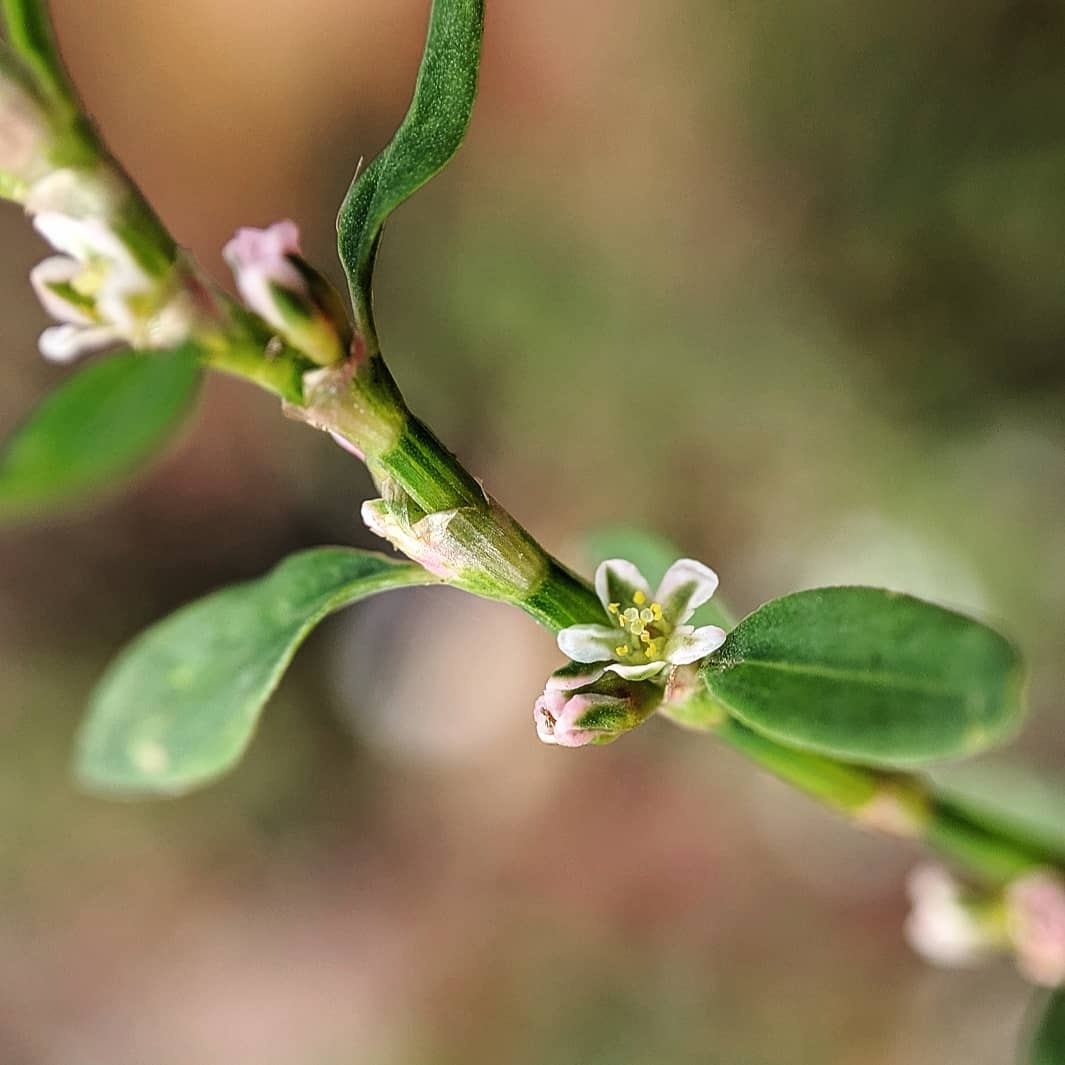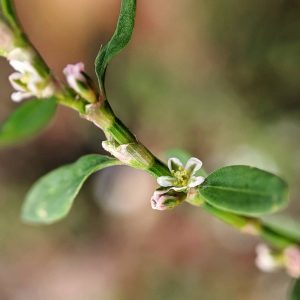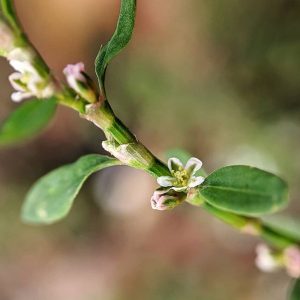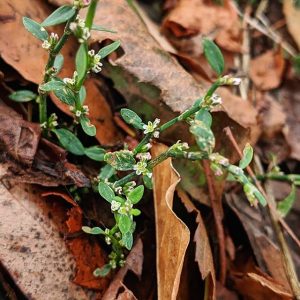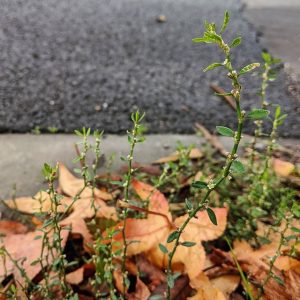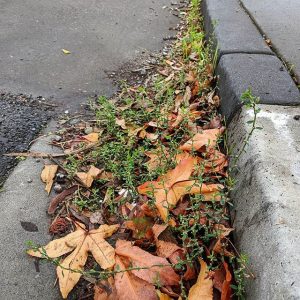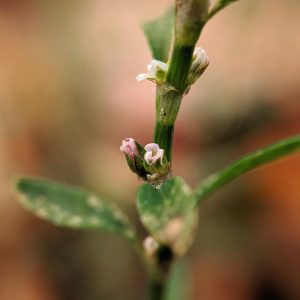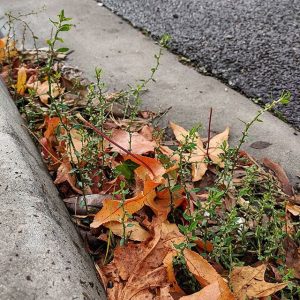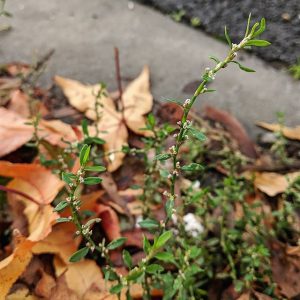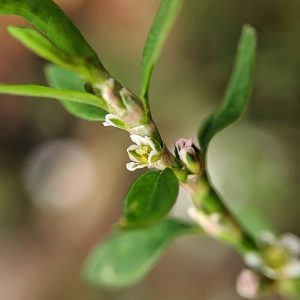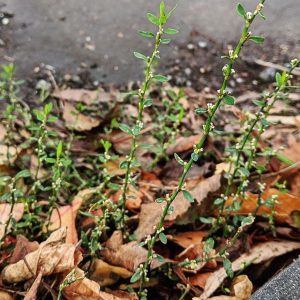Wireweed or Hogweed (Polygonum aviculare), a European annual weed of roadsides, disturbed and trampled ground, and tilled fields.
Usually presenting as a mostly prostrate clump, Wireweed’s tiny flowers are typically self-fertilised and can produce copious seed for the next generation. The species or species complex was distributed to temperate regions globally as a consequence of Spanish, French and British colonial networks, although one subspecies in North America has been identified as a possible indigenous or pre-colonial arrival (it had not been identified in European material).
Wireweed was reportedly a ‘troublesome’ weed in the vicinity of Perth by 1843 (Inquirer 22 Feb) It was formally recorded in Australian herbarium records from Adelaide in 1847, WA in 1848, and at Port Melbourne here in Victoria in 1850, although earlier collections may have been sent to Kew. In essence, although generally unrecognised as such at the time, this was one of a number of weed species whose first explosive arrival in the southern colonies of the 1840s and 1850s was a stark indicator of the rapid devastation of indigenous soils and vegetation under the grazing and trampling pressure of imported livestock.
In his 1859 inventory of naturalised plants in Australia, Joseph Hooker reproduced the notes of Frederick Adamson, who had written of Polygonum aviculare, ‘Very abundant about Victoria. I have seen newly turned-up soil covered with a thick matting of it. Cattle eat it with avidity.’ An 1862 writer in the South Australian Register (5 Aug), complaining that ‘foreign weeds seem to thrive very much better than any of our native ones,’ observed in particular that Wireweed ‘luxuriates in our strongest soils, strangling all grass and grain within range of its long-trailing branches.’
The photographed plants were growing in kerb gutter debris near the Merri Railway Station in Northcote.
View Original Post on Instagram
Search for information about Polygonum aviculare in the Flora of Victoria
View information and occurrences of Polygonum aviculare on the Atlas of Living Australia
